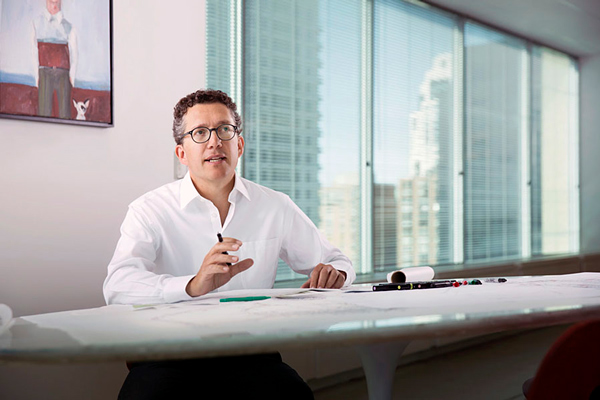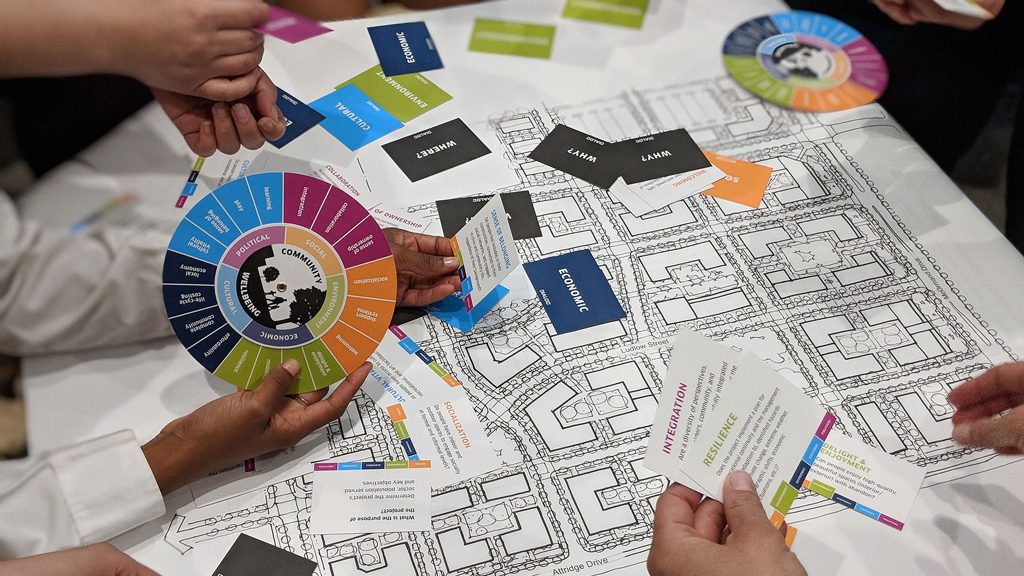No matter where you look, health is the new frontier.
It is the new status symbol.
I go to the gym. I eat organic. I walk everywhere. I’m taking the family on a bike-vacation.
These are the aspirational statements of a generation who seek quality of life, more than simply accumulating stuff.
Increasingly, it’s not the amount of toys, rather your ability to enjoy life, that matters.
So, what does this mean for designers?
What does it mean to architects, planners or engineers who are diligently crafting the environments we all inhabit?
It means we are at a milestone moment.
 After decades of ranting about how the built environment matters to the health and well-being of people and the environment, now folks are listening.
After decades of ranting about how the built environment matters to the health and well-being of people and the environment, now folks are listening.
Recognizing the fundamental idea of linking the design of neighbourhoods, buildings, landscapes and interiors to the well-being of communities required substantive due diligence, DIALOG teamed up with the Conference Board of Canada to undertake in-depth research on the evidence behind the intuition.
Following years of conducting literature reviews, interviews, and case studies, a full report — The Community Wellbeing Framework — was released July 18.
The framework documents the research and provides a detailed methodology, including indicators and metrics, to guide the work of design professionals in meaningfully improving the well-being of communities and the environment we all share.
We asked early adopters at DIALOG how the Community Wellbeing Framework is making their work better.
Some of their answers follow and more can be viewed in the video here. This article is an invitation for readers to download the report and run with it.
Let us know how the framework can impact your projects; what works for you, what doesn’t. We believe the methodology will only improve with your feedback.
So, as we collect additional experiences, we will continue to release updates and additional tools.

AGP: How is the Community Wellbeing Framework impacting your work?
What the Community Wellbeing Framework does is provide a real gut check at the beginning of our projects. Not from a design-centric standpoint, but from a communities-centred standpoint; so that we know that as we run through the project, we’re not leaving anything behind and we can stand behind the work as really fundamentally improving the well-being of the world around us. — Vance Harris, DIALOG principal, architecture
I find that this framework is becoming a common denominator in our conversations. Everybody gets it, everybody can use it. It’s becoming the tool I’m using to start the conversation and learn about how I can design spaces and buildings that make life better. — Mona Lovgreen, DIALOG associate, architecture
This is something concrete to share with our clients, stakeholders and the public about the different ways we can evaluate our designs and the tools and considerations we think of when we’re working through the design process. It helps us quantify if what we’re doing is actually making a difference. — Jill Robertson, DIALOG principal, landscape architecture
If you’ve got a blank site, it’s nice to have some parameters that have value to them. As a launching off point, using the framework metrics as something to leap from is great. — David James, DIALOG associate, architecture
As a mechanical engineer, I focus on energy conservation, redundancy, longevity of equipment, adaptability and operation and maintenance. The framework allows me to look beyond and focus on the community. It brings health into our buildings and makes it front and centre. Different metrics that we would typically not look at, whether it’s political, whether it’s environmental, whether it’s happiness of space, it’s all tied into what we do. It really makes us think and question what we do and how it impacts the occupants. — Raul Dominguez, DIALOG principal, mechanical engineering
Antonio Gomez-Palacio is a principal with DIALOG. Send comments and Industry Perspectives column ideas to editor@dailycommercialnews.com.
Enjoyed reading this article? Check out the DesignX newsletter and subscribe.







Recent Comments